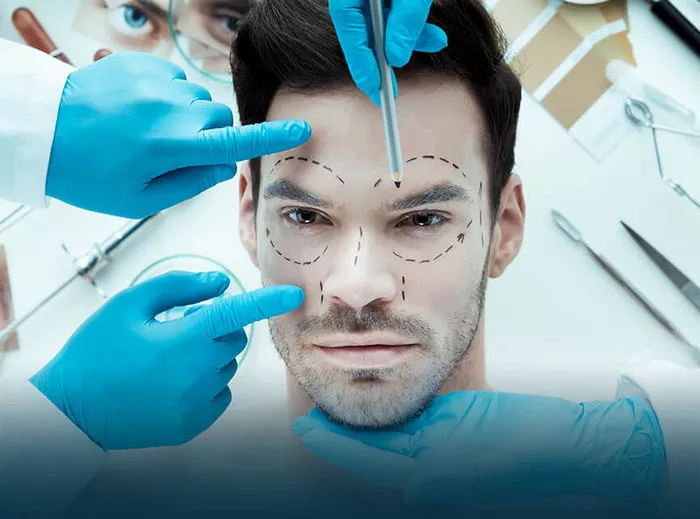Parotid surgery, a common procedure for treating various conditions affecting the parotid gland, poses a significant risk to the facial nerve due to its close anatomical proximity. This article provides an in-depth guide on how to identify the facial nerve during parotid surgery, ensuring the procedure is performed safely and effectively.
Understanding the Anatomy of the Facial Nerve
Overview of the Facial Nerve
The facial nerve, or cranial nerve VII, is responsible for innervating the muscles of facial expression. It has a complex pathway and intricate branching pattern, making its identification during parotid surgery crucial to avoid functional deficits.
Course of the Facial Nerve
The facial nerve exits the brainstem at the pontomedullary junction, travels through the internal acoustic meatus, and exits the skull via the stylomastoid foramen. It then enters the parotid gland, where it divides into five main branches: temporal, zygomatic, buccal, mandibular, and cervical.
Branches of the Facial Nerve
Temporal Branch: Innervates the frontalis and orbicularis oculi muscles.
Zygomatic Branch: Innervates the orbicularis oculi and zygomaticus muscles.
Buccal Branch: Innervates the buccinator, orbicularis oris, and levator anguli oris muscles.
Mandibular Branch: Innervates the muscles of the lower lip and chin.
Cervical Branch: Innervates the platysma muscle.
Preoperative Considerations
Imaging Studies
Preoperative imaging, such as MRI or CT scans, is essential to understand the tumor’s location and its relationship with the facial nerve. These imaging modalities provide a roadmap for surgical planning.
Patient Evaluation
A thorough patient evaluation, including a detailed history and physical examination, helps identify any pre-existing facial nerve dysfunction. This baseline assessment is crucial for postoperative comparisons.
See Also: 6 Most Dangerous Plastic Surgeries
Surgical Approaches to the Parotid Gland
Superficial Parotidectomy
A superficial parotidectomy involves removing the superficial lobe of the parotid gland, which lies above the facial nerve. This approach is commonly used for benign tumors.
Total Parotidectomy
A total parotidectomy involves removing both the superficial and deep lobes of the parotid gland. This approach is often necessary for malignant tumors.
Techniques for Identifying the Facial Nerve
Identifying Landmarks
Tragal Pointer: The tragal pointer, or the cartilaginous projection in front of the ear canal, is a reliable landmark. The facial nerve is located approximately 1 cm deep and inferior to the tragal pointer.
Tympanomastoid Suture Line: This bony landmark, where the mastoid process meets the tympanic part of the temporal bone, guides the surgeon to the stylomastoid foramen where the facial nerve exits the skull.
Posterior Belly of the Digastric Muscle: The facial nerve runs superficial to the posterior belly of the digastric muscle. Identifying this muscle helps in locating the nerve.
Dissection Techniques
Retrograde Dissection: Starting from the peripheral branches and tracing them back to the main trunk of the facial nerve. This technique is useful when the main trunk is difficult to locate initially.
Antegrade Dissection: Starting at the stylomastoid foramen and following the nerve distally. This method is the traditional approach and is often used in superficial parotidectomy.
Facial Nerve Monitoring: Using nerve monitoring systems to provide real-time feedback on facial nerve function. This technology helps in preventing nerve damage during surgery.
Intraoperative Strategies
Gentle Tissue Handling
Careful and gentle handling of tissues minimizes the risk of nerve injury. Using fine instruments and avoiding excessive traction are essential practices.
Hemostasis
Maintaining a clear surgical field with meticulous hemostasis allows better visualization of the facial nerve. Bipolar cautery is preferred to reduce the risk of thermal injury to the nerve.
Stepwise Dissection
A systematic and stepwise dissection approach ensures that the nerve is identified and preserved throughout the surgery. Incremental progress with frequent reassessment of anatomical landmarks is crucial.
Managing Nerve Injury
Immediate Intraoperative Management
If the facial nerve is injured during surgery, immediate steps should be taken to repair it. Microsurgical techniques, such as epineural or end-to-end anastomosis, are employed to restore nerve continuity.
Postoperative Care
Postoperative care involves regular monitoring of facial nerve function. Early physical therapy and, if necessary, adjunctive treatments like electrical stimulation can aid in nerve recovery.
Postoperative Complications
Facial Nerve Weakness
Temporary facial nerve weakness is a common complication but usually resolves within a few weeks to months. Persistent weakness requires further evaluation and possible intervention.
Frey’s Syndrome
Frey’s syndrome, characterized by sweating and flushing in the cheek area during eating, can occur postoperatively. Preventive measures, such as the use of interpositional grafts, can reduce its incidence.
Conclusion
Identifying the facial nerve during parotid surgery is a critical skill that requires a thorough understanding of facial anatomy, careful preoperative planning, and meticulous surgical technique. By following the outlined strategies and techniques, surgeons can minimize the risk of nerve injury and ensure better outcomes for their patients.
Related topics:

